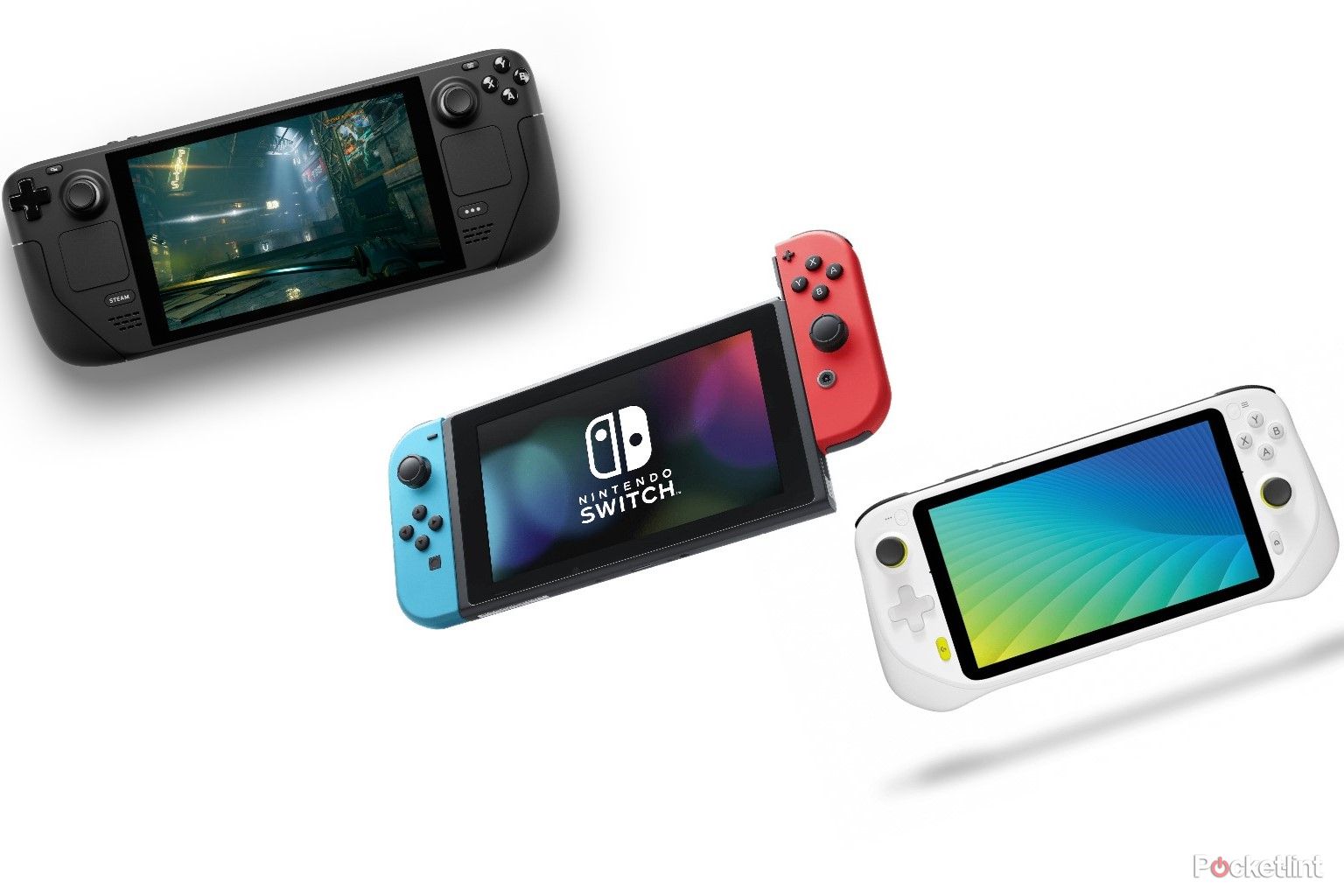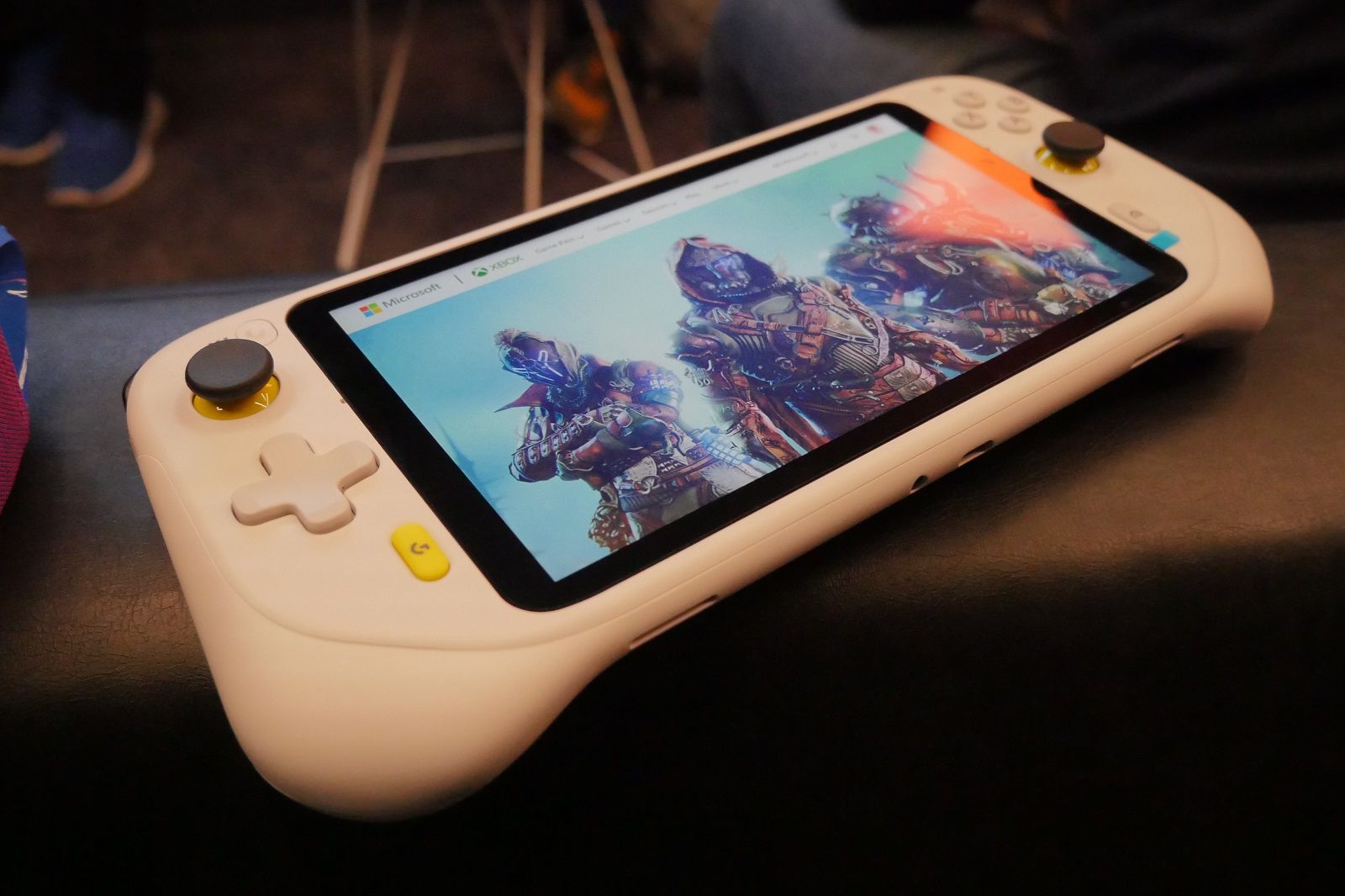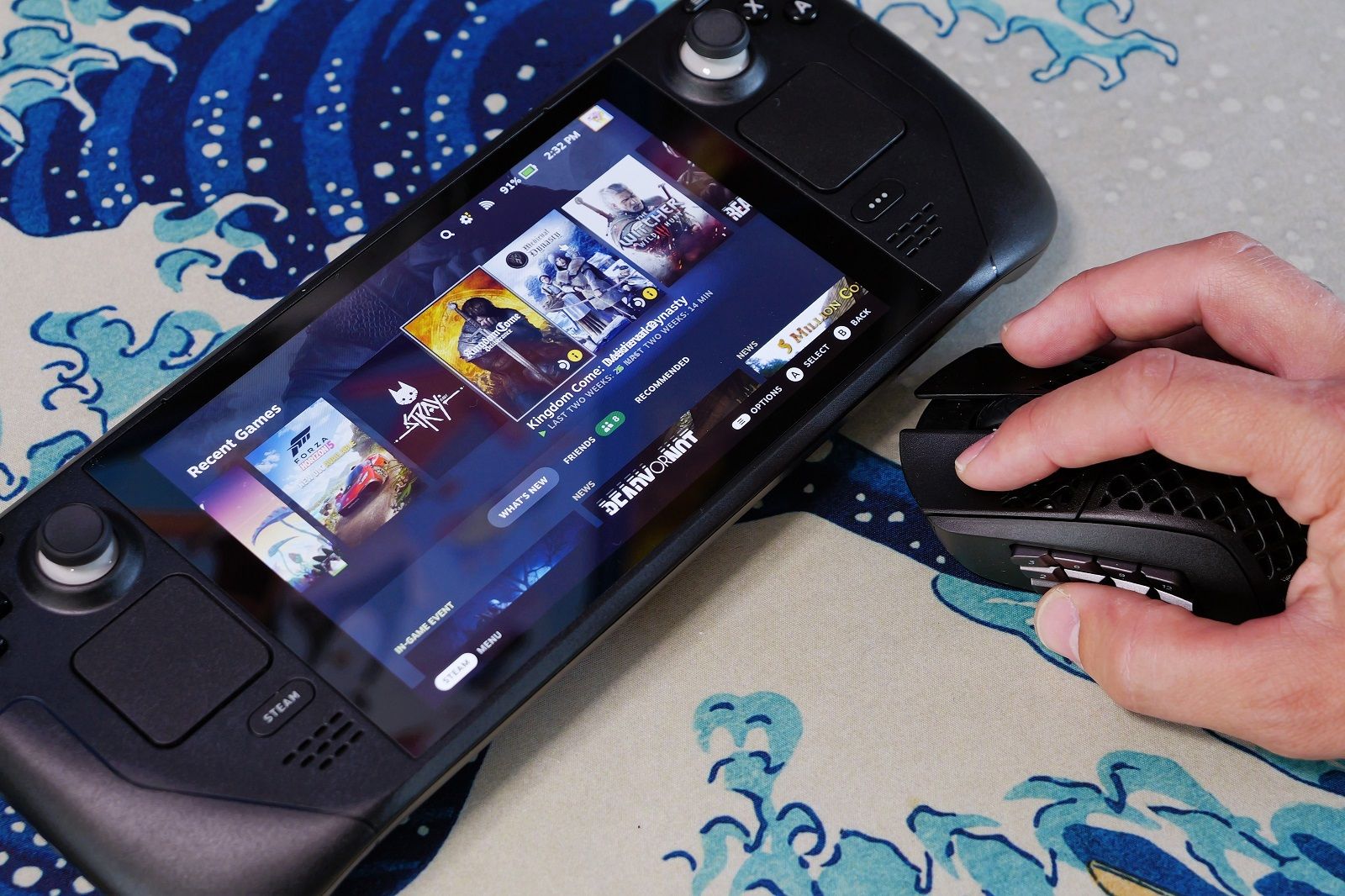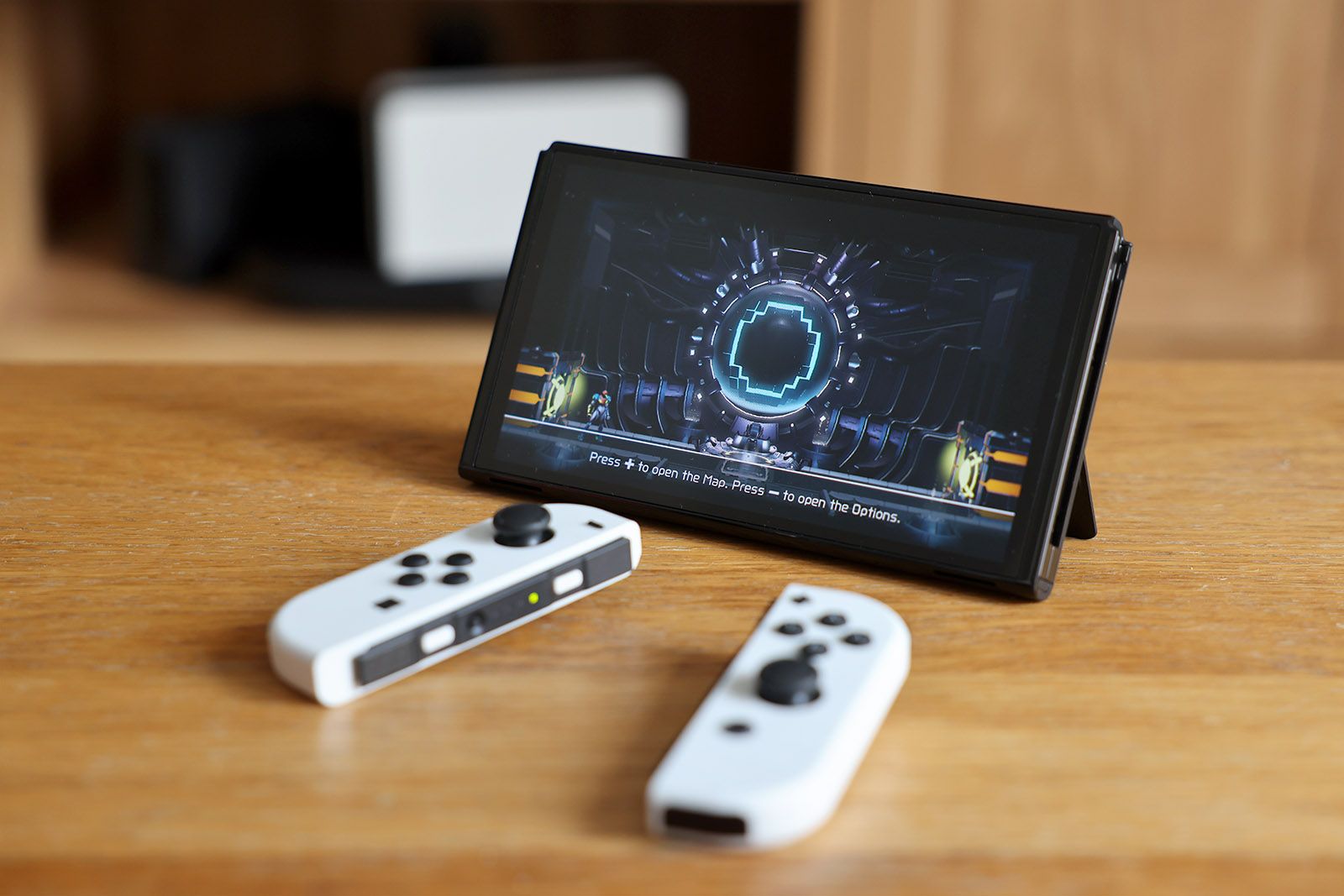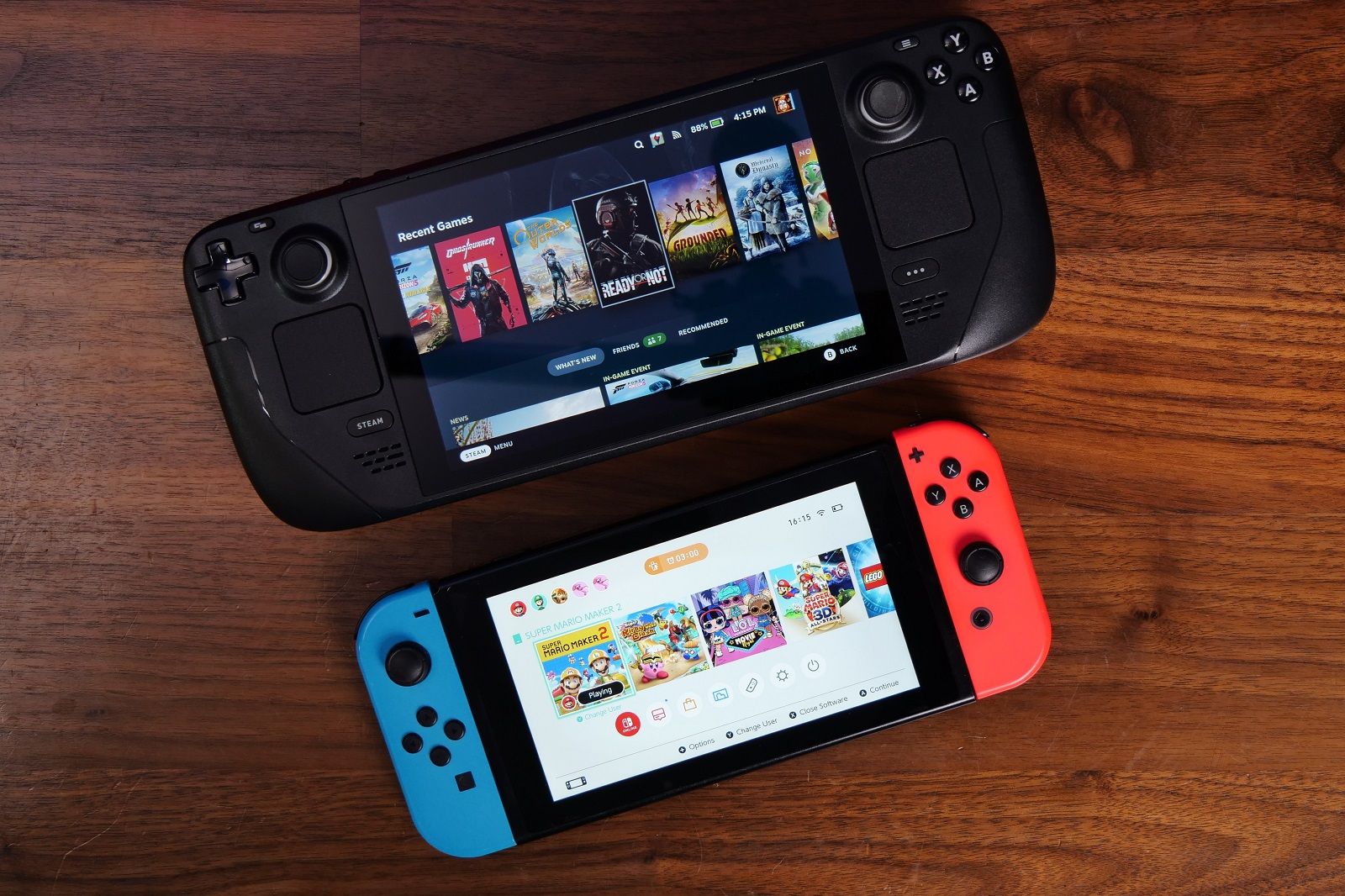If you're considering purchasing a gaming handheld there are a few options out there worth considering. Each with its own appeal in terms of specs, features and gaming capabilities.
Many view the Nintendo Switch as the current champion of the gaming handheld space and there are several versions of that handheld available including the Switch Lite, the original Switch and Switch OLED.
If you're a PC gamer though, the Valve Steam Deck might be a more appealing option with more power under the hood and a wider range of games available.
The Logitech G Cloud Gaming Handheld meanwhile is an interesting option which gives you access to cloud gaming services like Nvidia GeForce Now and Xbox Cloud Gaming.
So which console is the right choice for you? Read on to find out.
How much do the handhelds cost?
The Valve Steam Deck is currently priced according to storage size variations and other minor enhancements. The top model, for example, features premium anti-glare glass and some digital bonuses:
- Steam Deck 64GB - £349/$399
- Steam Deck 256GB - £459/$529
- Steam Deck 512GB - £569/$649
The Logitech G Cloud Gaming Handheld is available to pre-order for $299.99 in the US but will retail for more when it's fully available ($329). There's only one version available at the moment, so it's less confusing there.
There are some considerable price differences between the three devices but you're also getting quite a different experience as well. The Steam Deck has more powerful onboard components and the ability to play more triple-A games than the Switch but suffers in the battery life department as result.
What games can you play?
The Nintendo Switch has been around for a while now and as such, it has built up a good library of games including some much-loved classics such as Super Mario Odyssey, The Legend of Zelda: Breath of the Wild, Animal Crossing and more.
As well as various Nintendo games the popular handheld also has various third-party titles available with games such as The Witcher 3, Hitman 3, Skyrim and Alien Isolation being available to play.
The Valve Steam Deck perhaps has the upper hand though as it has access to the Steam Store and a mass of PC games available on there. It's worth noting that Steam Deck isn't able to run all the games on Steam, but the list of playable games is constantly expanding and you are able to easily check which games will work before you buy.
Some games are best suited to mouse and keyboard and simply won't play well on a handheld but if a game supports controller input it will likely work well on the Steam Deck too. The Steam Deck has another advantage in that if you have a good gaming PC and decent home Wi-Fi you can stream games from your PC to it thereby saving battery life and improving performance.
The Logitech G Cloud Gaming Handheld offers a number of different ways to play games. It runs Android 11 with access to the Google Play store and games on there.
Its real intention is for cloud-based gaming though. So this handheld comes with access to Nvidia GeForce Now and Xbox Cloud Gaming as standard. If you're paying for access to those services then you can potentially get access to thousands of games without having to purchase the games individually.
It also works with Steam Link as standard, so if you're a PC gamer then you can use your gaming PC to stream games to it while you're at home and play that way. Potentially the Logitech G Cloud Gaming Handheld gives you the most games to play with less cost than the other consoles. Though you will have to pay subscriptions.
Screen visuals
- Steam Deck: 7-inch IPS LCD 1280 x 800 pixel resolution; 16:10 aspect ratio, 60Hz
- Nintendo Switch Lite: 5.5-inch 1,280 x 720 LCD screen
- Nintendo Switch: 6.2-inch 1,280 x 720 LCD screen
- Nintendo Switch OLED: 7-inch 1,280 x 720 screen
- Logitech G Cloud Gaming Handheld: 7-inch IPS LCD panel, 1920 x 1080 FHD 16:9 ratio, 60Hz
In terms of screen size, the three handhelds are roughly comparable, though the original Switch and Switch Lite are slightly smaller.
The Logitech G console has the best resolution and is able to run at 1080p but the Switch OLED model may be more appealing as the OLED screen makes the colours more vibrant and appealing.
The visuals are an interesting consideration though. As we've said, the Steam Deck has the best compute hardware nestled inside its frame and so can run games at a higher FPS than the Switch and more taxing games too. Even more so when you're streaming from your gaming PC.
Logitech G Cloud Gaming Handheld is also making use of external gaming hardware, so as long as you have a good network you could in theory get the best experience on this handheld.
Your experience will naturally vary depending on what you're playing.
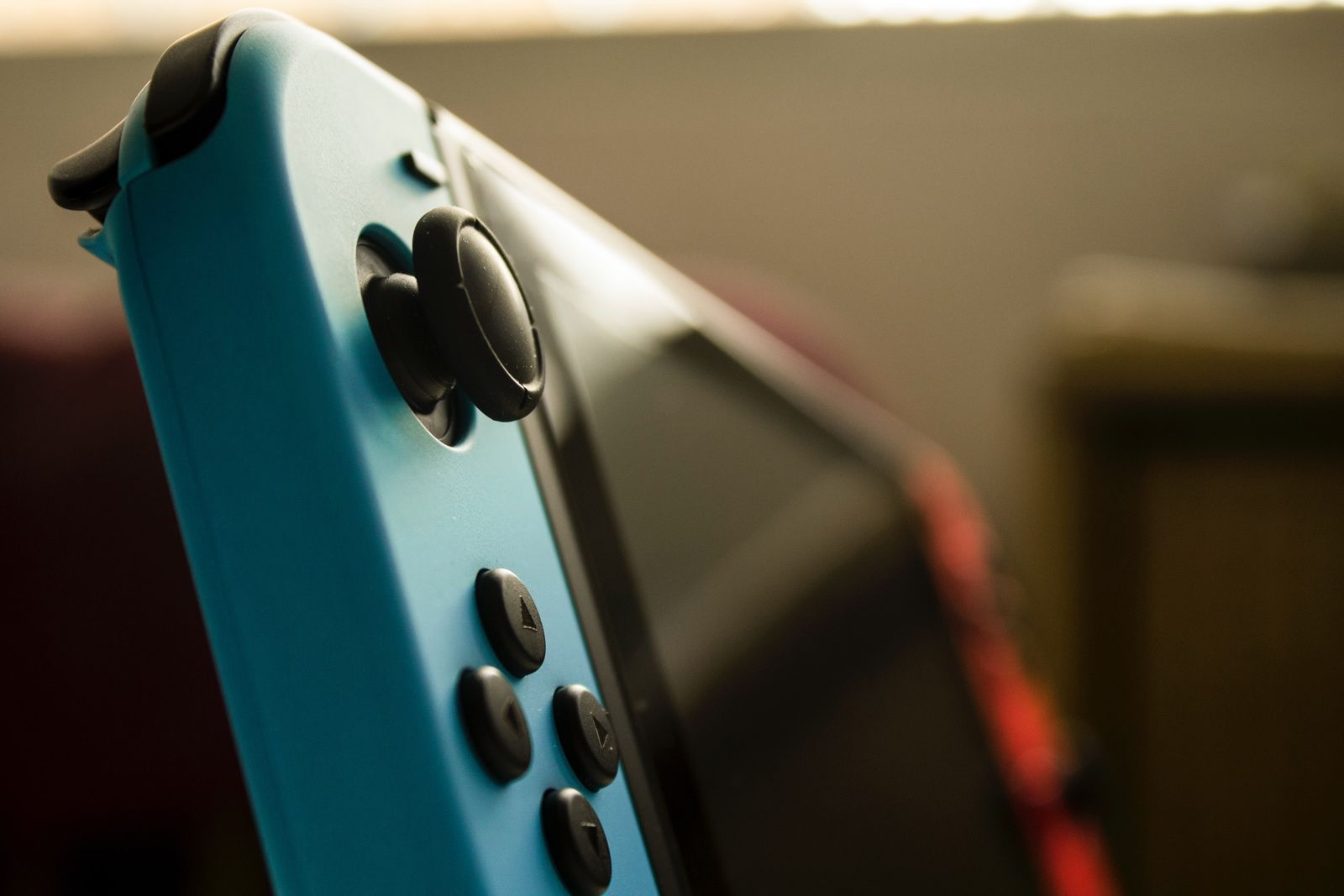
nintendo switch
The Switch is still a stunning bit of kit.
Performance and specs
- Steam Deck: AMD APU; CPU: Zen 2 4c/8t, 2.4-3.5GHz (up to 448 GFlops FP32); GPU: 8 RDNA 2 CUs, 1.0-1.6GHz (up to 1.6 TFlops FP32), 16GB LPDDR5 onboard RAM, various storage sizes
- Nintendo Switch Lite: Custom Nvidia Tegra chipset, 32GB internal storage
- Nintendo Switch: Custom Nvidia Tegra chipset, 32GB internal storage
- Nintendo Switch OLED: Custom Nvidia Tegra X1 chipset, 64GB internal storage
- Logitech G Cloud Gaming Handheld: Qualcomm Snapdragon 720G processor, Octa-core CPU up to 2.3GHz, 4GB LPDDR4x RAM, 64GB internal storage
The Valve Steam Deck boasts hardware that includes a Zen 2 CPU and RDNA 2 GPU. As such it has the most processing power out of these devices. It needs it too in order to run PC games natively on the handheld console.
Where you can play the same games on both Steam Deck and Switch you'd find the Steam Deck's specs allow for a much smoother and more visually pleasing gaming experience. In theory, the same could be said of the Logitech G Cloud Gaming Handheld as long as your connection is strong enough and fast enough to run games via the cloud on their highest settings.
There's a lot to be said for games designed specifically for one console though. In other words, games designed for the Switch specifically will likely play will fewer problems than those crafted for a PC and then run on a handheld console.
Battery life
- Steam Deck: 5313mAh Lithium-ion battery
- Nintendo Switch Lite: 3570mAh Lithium-ion battery
- Nintendo Switch: 4310mAh Lithium-ion battery
- Nintendo Switch OLED: 4310mAh Lithium-ion battery
- Logitech G Cloud Gaming Handheld: 6000mAh Li-Polymer battery
Battery life is an important part of the handheld console gaming experience. There are some bold claims about how long each of these consoles will last as well.
Valve says you can get anywhere between two and eight hours of battery life from your Steam Deck. We usually find it's somewhere around the three-hour mark but you can get more by adjusting the FPS settings, turning the brightness down, playing less taxing games, streaming from your PC and other things.
The Nintendo Switch usually manages somewhere between three and five hours before it needs charging. This varies from model to model, but is more consistent.
The Logitech G Cloud Gaming Handheld claims as much as 10 hours. We haven't had the chance to test this yet, but because the gaming is mostly cloud-based it should use less power and therefore last longer than the other handhelds.
Design differences
We've already shown that there are some similarities between these handheld consoles. They all have touchscreens and familiar button layouts and as well as control sticks and headphone jacks and USB ports.
The Nintendo Switch comes with a dock that you can connect to your TV as standard. While the Steam Deck does not, but a dock is coming and you can still output to a TV or gaming monitor if you want to.
With more internal hardware the Steam Deck is a fair bit larger and heavier than both the Nintendo Switch and the Logitech G Cloud Gaming Handheld. The Steam Deck weighs 669g, the Nintendo Switch OLED is 442g and the Logitech G handheld is 463g.
The Steam Deck is a bit chunky and compared to the others but it's still comfortable to game on and the carry case it comes with as standard is an ideal way to transport it without fuss.
The Steam Deck also has a couple of trackpads that you can use for more granular controls and mouse-like clicks when you need them.
Conclusion
Obviously, it's hard to pick a winner here as the handheld that suits you will be down to how you plan to play. If you like to game on the go with something portable than the Switch is a logical option, if you want something light to use around the house with access to masses of games then the Logitech G handheld makes sense. If you want to play serious PC games in any room in your house then choose the Steam Deck.

